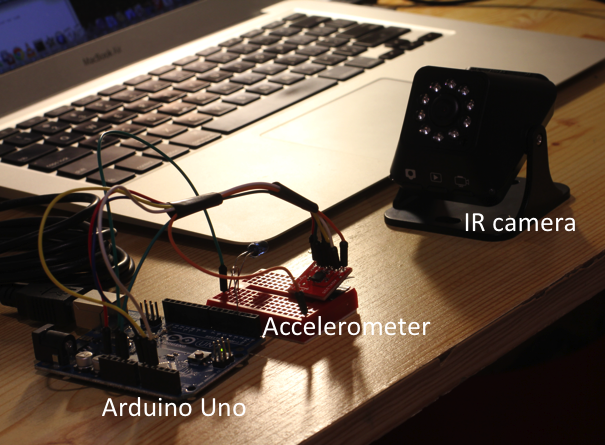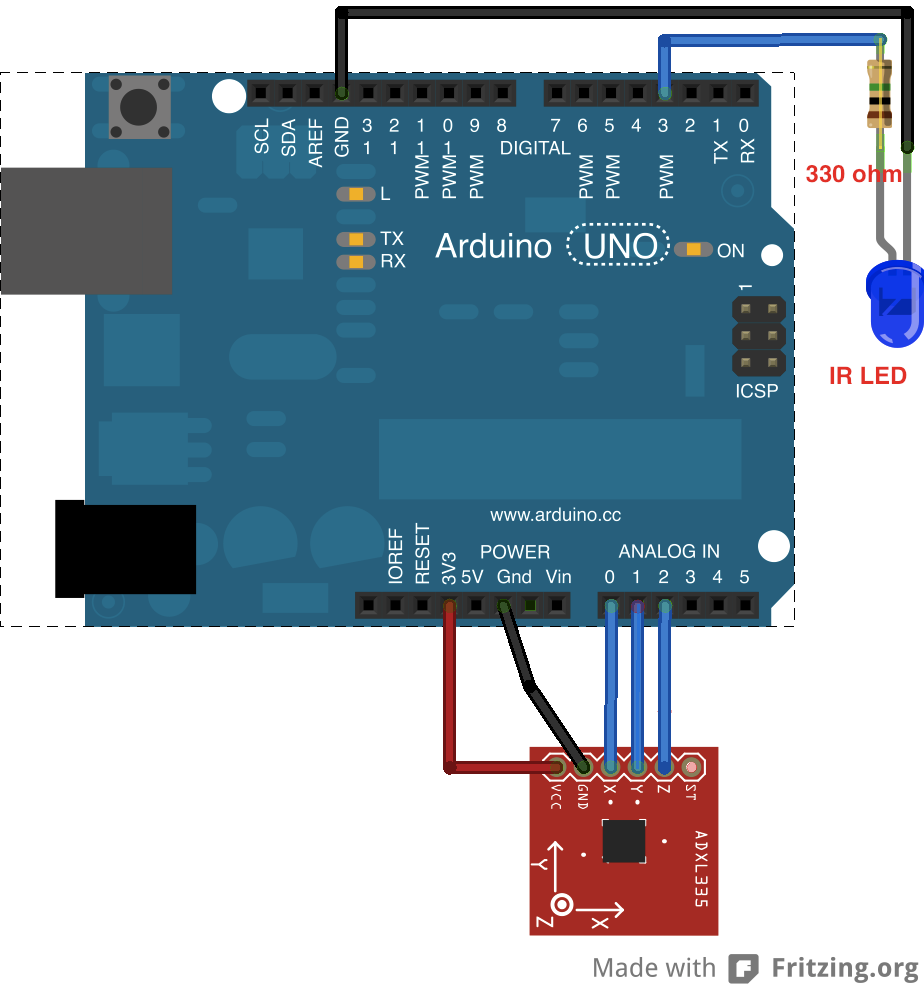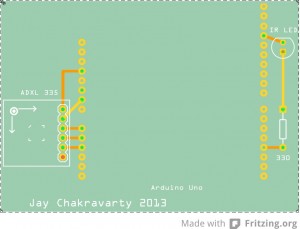How many times have you returned to your parked car only to find it scratched or bumped with no trace of the offender? Well, I’ve had my car vandalised or bumped into on five separate occasions over the years with repair bills running into thousands of dollars.
This is a project that hopes to remedy that situation. The idea is to have a camera in your car that will record video for a pre-determined amount of time when it detects a bump in the parked car. Hopefully, your camera will allow you to play back footage at the time of collision and record the number plate of the offending vehicle. I don’t know if your insurance people will accept this as evidence, but atleast it will give you the satisfaction of finding the culprit(s)!
At this stage of the project, the components are:
-an Arduino Uno
-an ADXL 335 accelerometer
-a tiny infra-red (IR) camera that records with mega-pixel resolution (operational both day and night, thanks to the IR emitters lighting up the scene at night) with built-in SD card.
The accelerometer detects a bump when someone hits the car and triggers the camera which records video for a pre-determined amount of time.
Above is the circuit diagram for this experiment, and below is the PCB sketch, made using software from Fritzing (they are located in Berlin and will print out your PCBs for you):
The link between the micro-controller and the camera is wireless infra-red. The camera came with a remote control, and I reverse-engineered it to work out the commands for on/off and start/stop recording using an IR detector. The microcontroller now sends commands to the camera using an IR emitter, which is just a LED that operates in the IR spectrum.
I made use of this wonderful library, written by Kevin Shirriff to decode the remote control signals between the remote and the camera.
Here is the Arduino code to trigger camera recording when the accelerometer values are a threshold above previously recorded (filtered) values. Accelerometer values in x, y and z axes are filtered by a moving average filter. If new values are a threshold above the previous (moving) average values in any of the 3 axes, then the camera is turned on and recording commenced for 10 seconds.
//////////////////////////////////////////////////////////////////
//Arduino code to turn on a video camera (using IR link) when
//accelerometer detects movement of device
//Jay Chakravarty 2013
//Adapted from the book Arduino Cookbook by Michael Margolis
//and
//bildr.com (Simple code for the ADXL335)
//http://bildr.org/2011/04/sensing-orientation-with-the-adxl335-arduino/
//////////////////////////////////////////////////////////////////
#include <IRremote.h> //IR remote control library
//Number of remote control keys
const int numberOfKeys = 2;
//IR Key codes
long irKeyCodes[numberOfKeys]=
{ 0xFFA25D, //on/off key
0xFF906F //record video start/stop key
}; //holds the codes for each key
//Analog read pins
const int xPin = 0;
const int yPin = 1;
const int zPin = 2;
//accelerometer values
int xRead;
int yRead;
int zRead;
//filtered accelerometer values
double xAvg = 0;
double yAvg = 0;
double zAvg = 0;
//filtering constant
double alpha = 0.2;
//threshold
double threshold = 1.0;
long startTime;
long elapsedTime;
IRsend irsend; //create the IRsend object
int STATE = 0; //state of the state machine
// 0 = no motion
// 1 = motion detected, started camera recording process
void setup(){
Serial.begin(9600);
startTime = millis(); // store the start time
}
void loop(){
elapsedTime = millis() - startTime;
//read the analog values from the accelerometer
xRead = analogRead(xPin);
yRead = analogRead(yPin);
zRead = analogRead(zPin);
//filter the accelerometer values
xAvg = alpha*xRead + (1-alpha)*xAvg;
yAvg = alpha*yRead + (1-alpha)*yAvg;
zAvg = alpha*zRead + (1-alpha)*zAvg;
//Check if accelerometer detects movement
if ( (abs(xRead - xAvg) > threshold) || (abs(yRead - yAvg) > threshold) || (abs(zRead - zAvg) > threshold) )
{
/*
//Print accelerometer values
Serial.println(" | xRead: ");
Serial.print(xRead);
Serial.print("xAvg: ");
Serial.print(xAvg);
Serial.println(" | yRead: ");
Serial.print(yRead);
Serial.print("yAvg: ");
Serial.print(yAvg);
Serial.println(" | zRead: ");
Serial.print(zRead);
Serial.print("zAvg: ");
Serial.print(zAvg);
*/
if ( elapsedTime > 5000)
{
STATE = 1;
}
}
if (STATE == 1)
{
irsend.sendNEC(irKeyCodes[0],32);
Serial.println("Turning on camera..wait for 5 seconds");
myDelay(5000);
irsend.sendNEC(irKeyCodes[1],32);
Serial.println("Start video recording, recording for 10 seconds...");
myDelay(10000);
irsend.sendNEC(irKeyCodes[1],32);
Serial.println("Stop video recording");
myDelay(5000);
irsend.sendNEC(irKeyCodes[0],32);
Serial.println("Turning off camera");
myDelay(5000);
STATE = 0;
startTime = millis();
}
delay(100);//just here to slow down the serial output - Easier to read
}
void myDelay(unsigned long duration)
{
unsigned long start = millis();
while (millis() - start <= duration)
{
}
}



